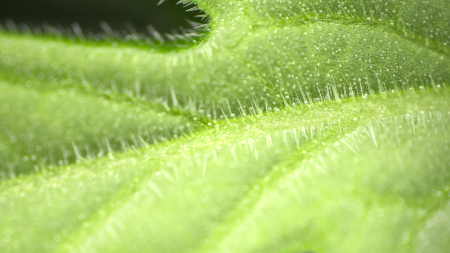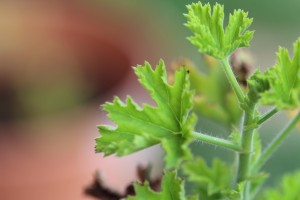Pelargoniums
Description
|
|
The genus Pelargonium belongs to the Geraniaceae family. Pelargoniums differ from geraniums in three ways: - The organisation of the petals. - The number of stamens. - A more or less enlarged nectariferous spur above the upper petals in pelargoniums. There are around 280 species of Pelargonium divided into 15 sections or sub-genera. The subgenus Pelargonium, comprising 24 species, contains the majority of the fragrant species. These plants hybridise easily and the hybridisation of P. radens or P. graveolens with P. capitatum has given rise to the rose-scented ‘geraniums’ or P. Rosat. These hybrids are prized for their fragrance and are currently grown mainly in China, Egypt, India and Madagascar. |
|
Pelargonium x 'Candy Dancer' |
|
|
Pelargonium x 'Prince of Orange' → Geraniums have regular flowers with an axis of symmetry (actinomorphic flower) whereas pelargonium flowers have a plane of symmetry (zygomorphic flower). |
At the laboratory
LBVpam and IFF (International Fragrance and Flavors) have been working together since 2013.
A collection of botanical species has been created, including numerous accessions from the pelargonium section as well as many hybrids. We study them for different reasons ↓
The diversity of fragrance components
Pelargonium fragrance compounds are produced by the leaves. These compounds are mainly mono- and sesquiterpenes. This plant is therefore a good model for studying the biosynthesis pathways of these compounds, some of which, such as rose oxides, are little studied. These plants also have enzymes that can produce enantiomers of the same compound with different fragrances. A better understanding of these pathways is therefore needed to select plants that produce original fragrances.
The study of the evolution and differences of secretory glands in plants
Essential oils in Pelargoniums are produced in secretory trichomes (thin outgrowths of the leaf). Pelargonium can be used to study the development genes behind the differentiation of secretory glands in plants. It is also a model for studying secretion. Finally, some pelargoniums have been used for genetic transformation, enabling reverse genetics to be carried out by gene overexpression or gene silencing.
|
|
|



 Université Jean Monnet
Université Jean Monnet